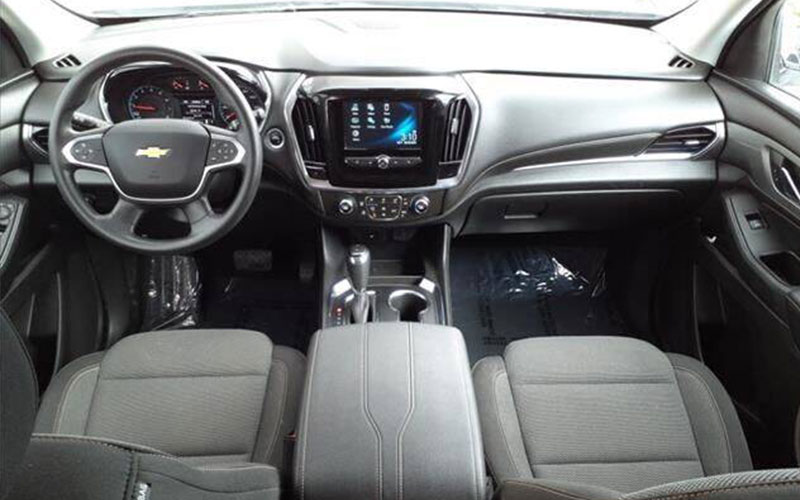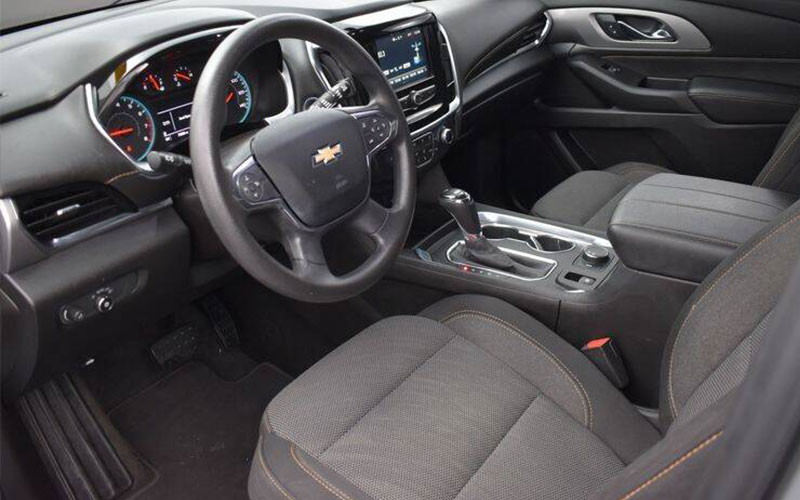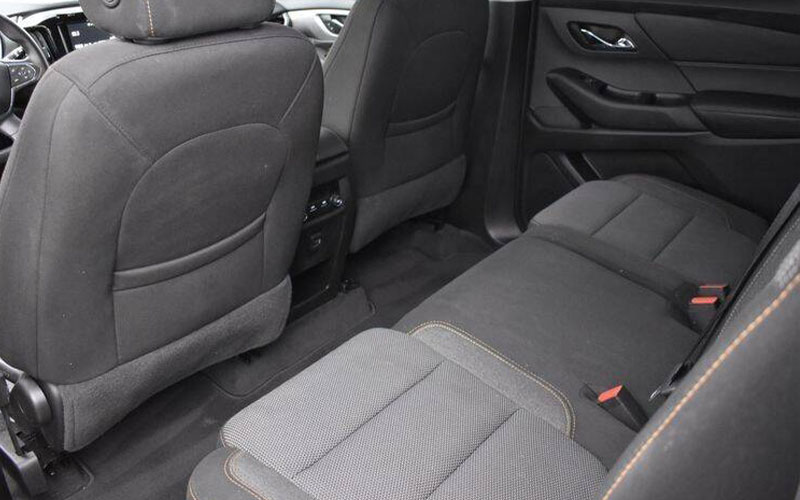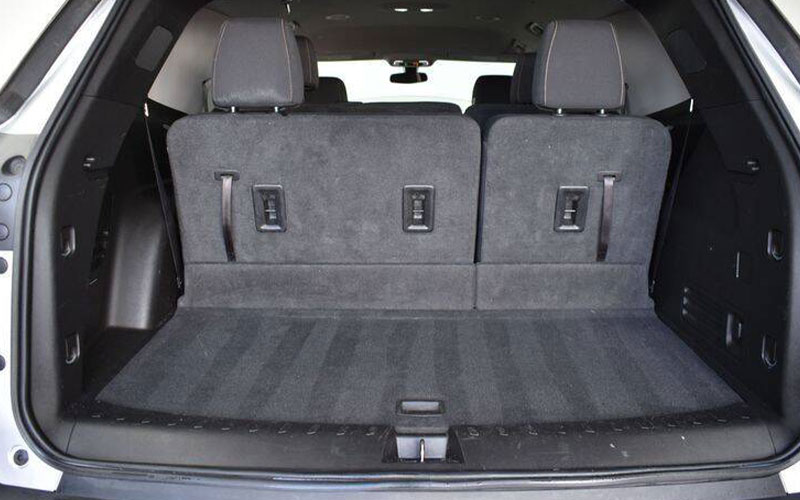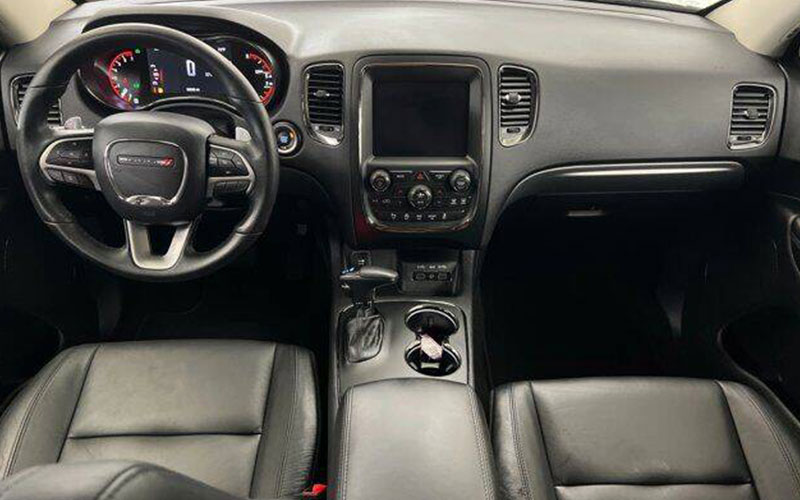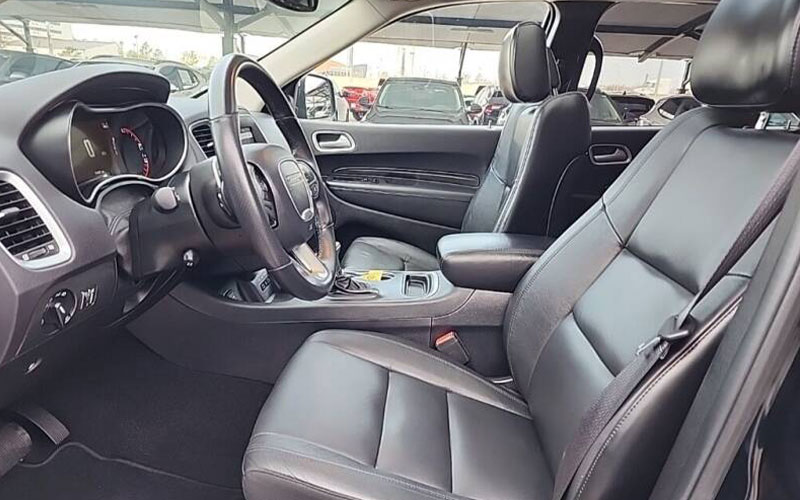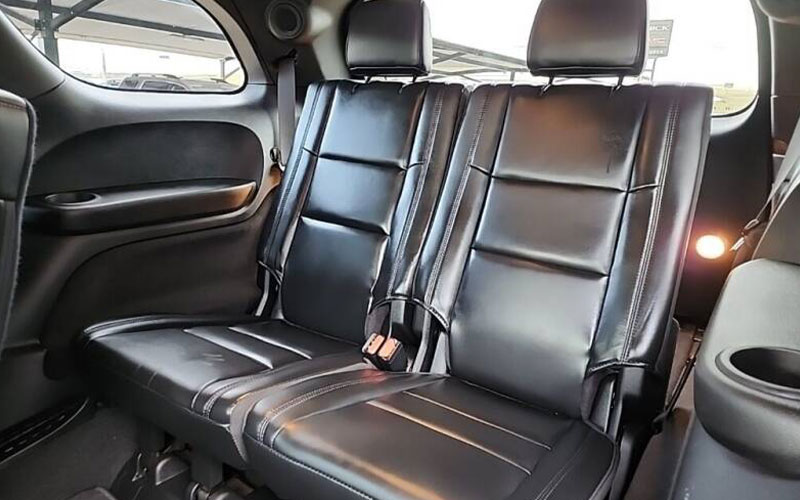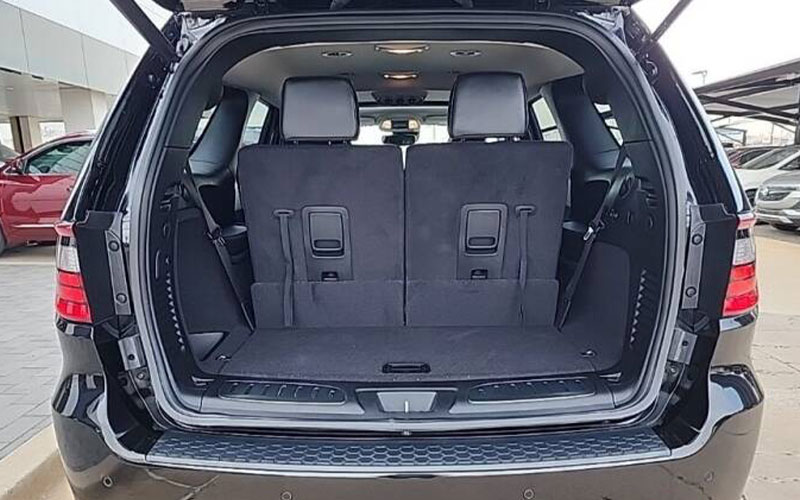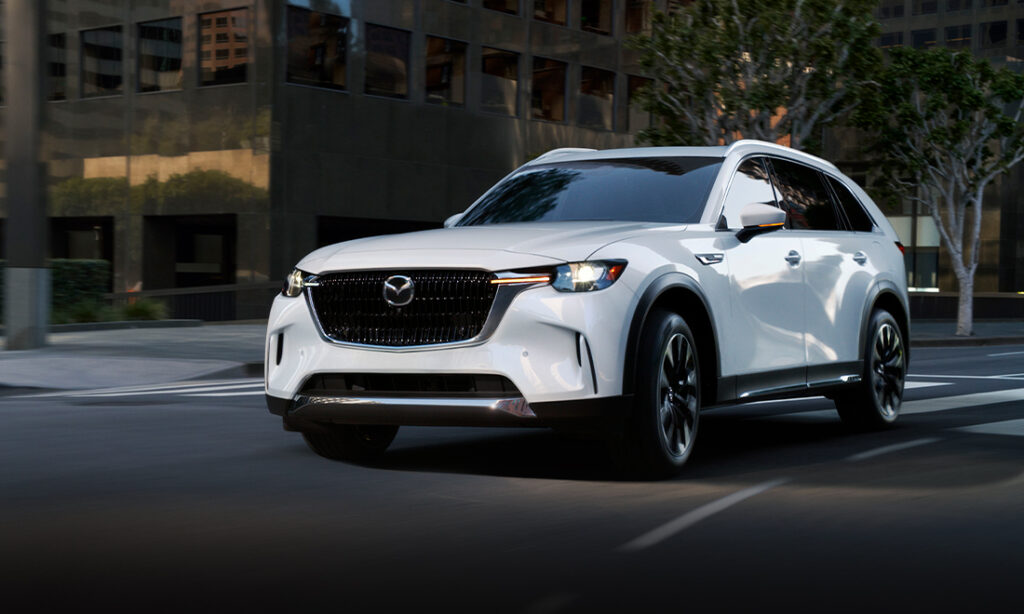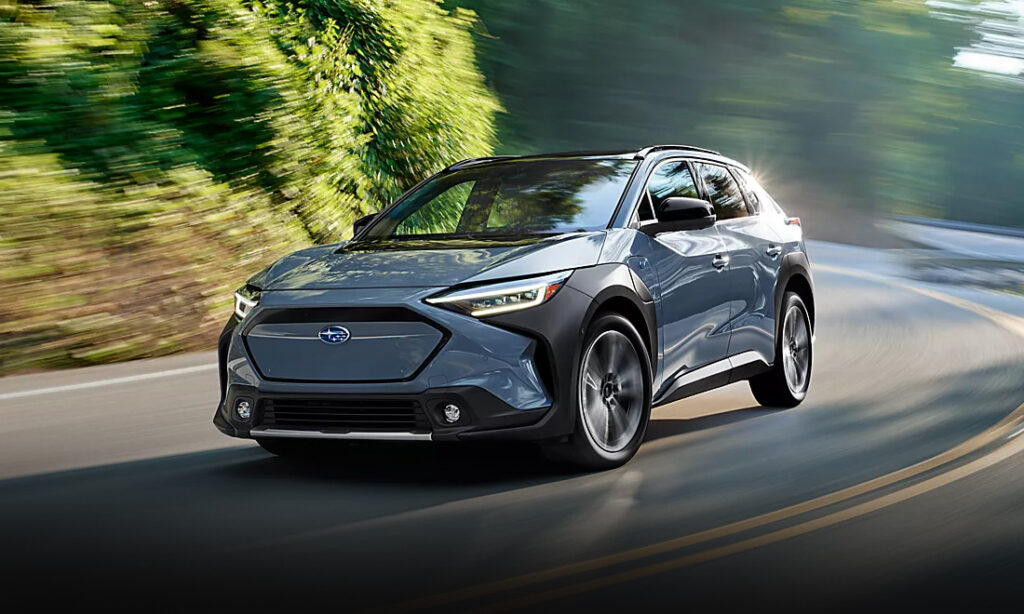Budget Buy: Dodge Durango vs Chevrolet Traverse
We dig into the details to find out of the Dodge Durango or the Chevrolet Traverse is the better budget buy under $30,000.
Two Popular Three-Row SUVs Under $30,000
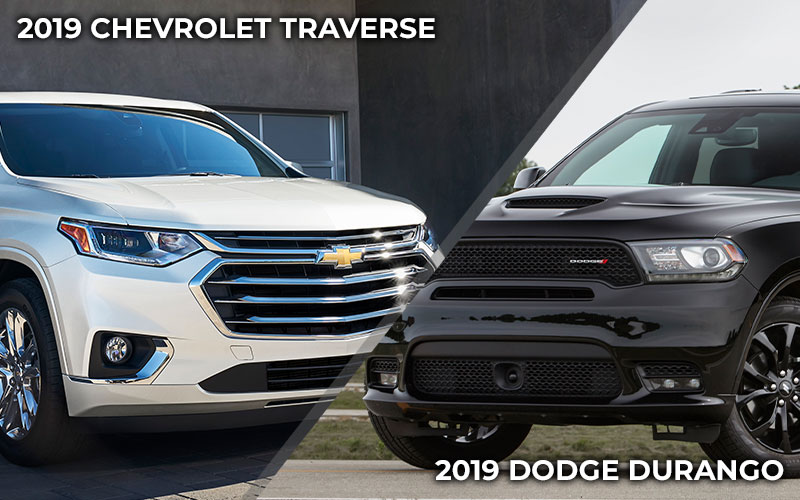
The rivalry between Dodge and Chevrolet spans many decades and today it takes the form of a comparison between each brand’s three-row SUV. Large family haulers like these have completely taken over the automotive landscape thanks to their versatility, high driving position, and perceived safety benefits. Today, we’re going to break down specs, driving performance, interior comfort, and more as we seek to find the better buy for under $30,000.
Specs
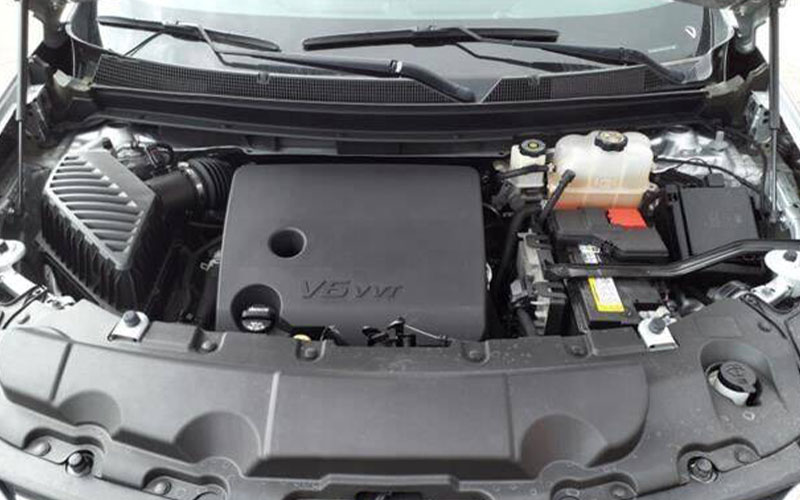
Sticking to our budget in the search for a Chevrolet Traverse requires a willingness to look back at a 2019 model. That’s the latest model with most trims available to us under budget and with under 40,000 miles. Chevrolet sold the 2019 Traverse with a standard 310 hp 3.6-liter V6 and front-wheel drive. All-wheel drive is available across most of the lineup.
One trim, The Chevrolet Traverse RS, uses a 2.0-liter turbocharged four-cylinder engine with front-wheel drive only and it only makes 257 hp. All Traverses use a nine-speed automatic transmission. According to the EPA, the traverse gets at best 22 mpg combined.

Thankfully, for the sake of comparison, the 2019 Dodge Durango is also largely available under budget albeit with a little more mileage depending on the trim level. Interestingly, it also comes standard with a 3.6-liter V6 engine which in this case makes 295 hp.
Unlike the Traverse, the Durango is rear-wheel drive or all-wheel drive depending on the trim and features. There’s also an available 5.7-liter V8 with 360 hp and an SRT version with a 6.4-liter V8 that makes 475 hp. Don’t spend too much time thinking about that last one though as it’s way out of our budget. All three available engines use an eight-speed automatic transmission. 21 miles per gallon combined is as good as fuel economy gets in the Durango according to the EPA.
Driving and Performance
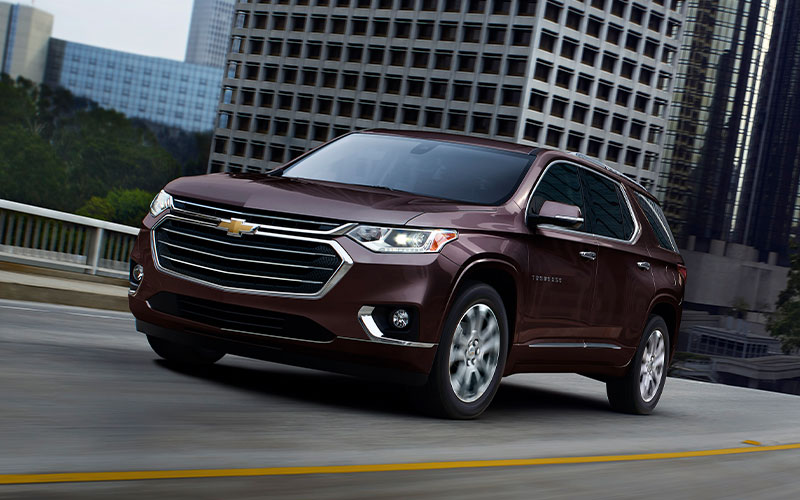
The Traverse is actually somewhat surprising from behind the wheel. It’s poised and easily piloted. The steering feels good because it’s both responsive and communicative. Ride comfort is nicely balanced with adequate handling and the V6 is properly punchy.
The Traverse is no athlete on four wheels but it’s probably better to drive than most would assume given its high curb weight and front-wheel drive layout. If there’s any disappointment in the lineup it’s the RS for us. RS used to stand for Rally Sport, so the fact that it makes less power than the V6 is upsetting.
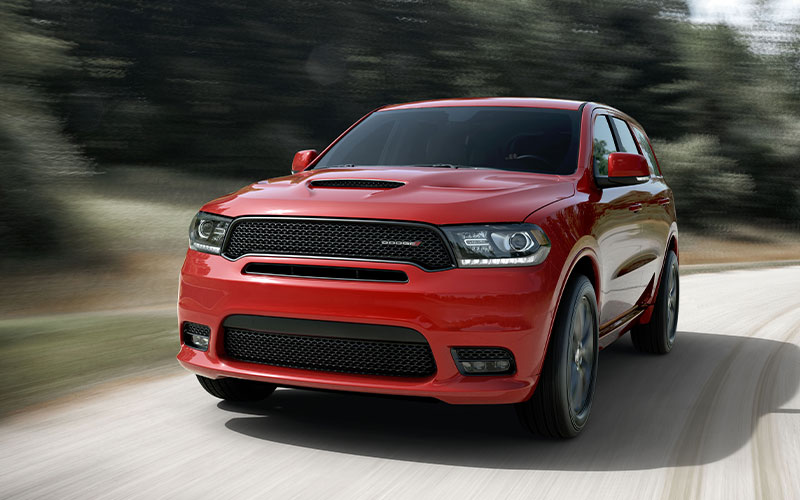
That pockmark on a legendary RS badge is made even more apparent behind the wheel of the Durango which is older but feels younger in terms of driving performance. The rear-wheel drive versions are especially playful and the steering is lighter and sharper than in the Traverse.
If this competition was only about driving the Durango would win by a mile. The available V8 only aids in that effort too since it sounds great and makes an otherwise very heavy vehicle feel nimble. The SRT might be unavailable at this price but it’s a riot if one can get their hands on it.
Comfort and Interior
There’s no getting around the fact that inside of the Chevy Traverse, things feel somewhat cheap. Despite that one soft spot in its belly, this is otherwise a very comfortable cruiser. Some of that comes down to its spacious interior and some of it comes down to excellent sound deadening. It doesn’t hurt either that Chevrolet includes a lot of technology in the cabin.
The infotainment system isn’t as big as some more modern vehicles but it’s fast, easy to understand, and includes both Android and Apple connectivity. USB power ports are littered throughout the cabin too. Cargo space is another big win for the Traverse as it sports 23 cubic feet behind the third row. Drop both rows and that storage expands to 98.2 cubic feet.
The Dodge Durango manages to offer slightly better interior materials without giving up much in the way of comfort. What it doesn’t offer is a second-row bench seat so if you need space for eight, it might not work. It also doesn’t look as modern which makes sense as it dates back into the past further than the Chevy. Despite those potential drawbacks, we think it’s just as comfortable and quiet as the Traverse.
In our eyes, the available 8.4-inch infotainment system is one of the best in the business. Android Auto and Apple CarPlay are both standard as well. Dodge doesn’t offer as many tech features though so don’t expect a bevy of USB power ports or safety features like Teen Driver. An available 19-speaker Harman Kardon sound system is the best in this competition though. The Dodge also offers 43.3 cubic feet of cargo space behind its last row of seats. Fold them all down and it actually comes in behind the Traverse with just 85.1 cubic feet of storage space.
Trims and Features
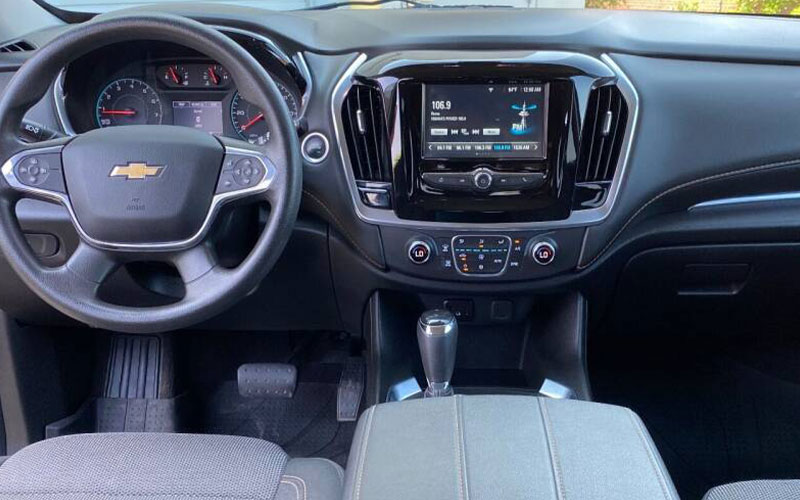
For 2019, Chevrolet sold the Traverse in seven different trim levels. All but the RS use the same abovementioned V6 and nine-speed automatic transmission. Front-wheel drive is standard except on the High Country where all-wheel drive is standard.
L – The base Traverse gets LED running lights, 18-inch wheels, cloth upholstery, tilt-adjustable steering, a Wi-Fi hotspot, a 7-inch infotainment system, and Chevy’s Teen Driver system.
LS – This trim adds tinted privacy glass and opens up an array of optional extras like second-row tablet mounts, all-wheel drive, and more.

LT Cloth – Go for this trim and you’ll get second-row captain’s chairs, roof rails, mirror-integrated turn signals, and a power-adjustable driver’s seat.
LT Leather – As the name suggests, this trim adds leather upholstery along with a power-adjustable passenger seat, a 4.2-inch driver information display, heated front seats, and a universal garage door opener.
RS – This is the only trim that comes with the smaller and weaker 2.0-liter engine and is only available with front wheel drive. It also gets sporty styling cues and 20-inch wheels.
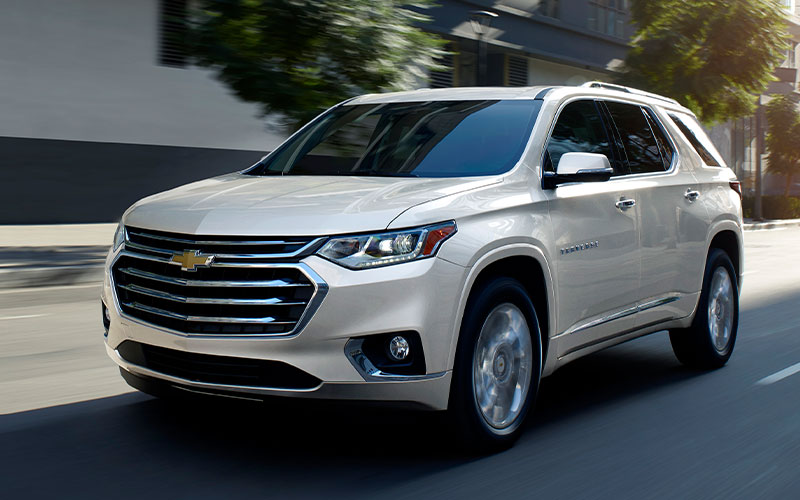
Premier – This trim gets full LED headlights, a power liftgate, ventilated front seats, heated rear seats, a power-adjustable steering column, driver’s seat memory settings, and wireless device charging.
High Country – This trim adds a special all-wheel drive system, automatic high beams, a panoramic sunroof, adaptive cruise control, and a power-folding third-row seat. Remember when we mentioned at the outset that MOST 2019 Traverse trims are available for under $30,000? Well, the High Country is too but you have to accept buying one with well beyond 70,000 miles in most cases as of this writing.

For 2019, Dodge sold the Durango in five trim levels.
SXT – The base Durango comes with 18-inch wheels, cloth upholstery, a load-leveling rear suspension, fog lights, heated mirrors, tri-zone automatic climate control, a 7-inch infotainment system, and six speakers.
GT – Step up to the GT and you’ll get 20-inch wheels, a power tailgate, rear parking sensors, an eight-way power-adjustable driver’s seat, and satellite radio.

Citadel – The Citadel is the top trim with the V6 and as such it gets power-folding mirrors, upgraded brakes, front parking sensors, a sunroof, leather and vinyl upholstery, heated seats in the first two rows, an 8.4-inch infotainment system, a nine-speaker Alpine sound system, and HD radio. Notably, the V8 from the R/T is available in the Citadel.
R/T – This is the trim where the 5.7-liter V8 resides. It also gets upgraded brakes, a lower ride height, leather and faux suede upholstery, and an upgraded steering system.
SRT – This trim comes with the aforementioned 6.4-liter V8 and also gets bigger brakes, a high-performance suspension, an electronically controlled limited slip differential, upgraded upholstery, auto-leveling headlights, and ventilated front seats. Again though, it’s well outside of our $30,000 budget.
The Verdict
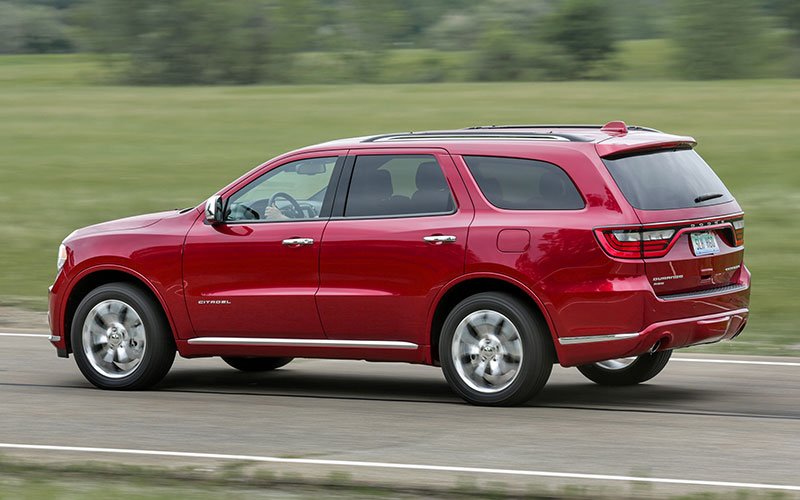
These two SUVs are closer in terms of overall value than it might seem. The Durango is far more enjoyable to drive and it’s just as spacious as the Traverse but it does give up some ground in terms of overall fuel economy. Despite that, it’s the one we’d spend our cash on. If you’re ready to pull the trigger be sure to check out our full article on getting the best auto loan rate.


